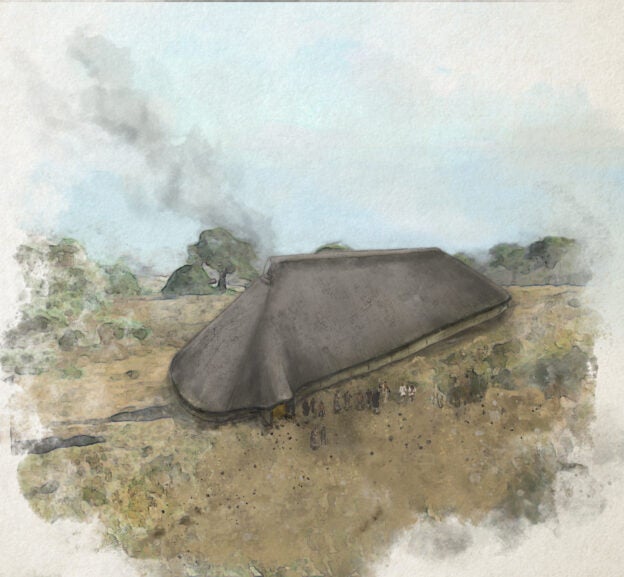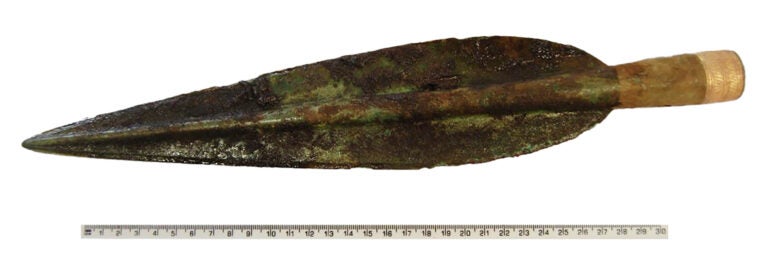
An early Neolithic timber hall has been found beneath a school in Scotland, with archaeologists believing it could have been a ceremonial venue for Scotland’s first farming communities.
The remains of the “internationally significant” hall, older than Stonehenge, were found beneath what will become two school football pitches for Carnoustie High School in Angus.
The site, which was first explored in 2017, is being investigated by the Guard Archaeology. It is believed to be the largest hall found in Scotland.
The archaeological group said the discovery of the hall and a smaller companion building was “exceptional” and included artefacts from around Scotland, including Arran and the Highlands, as well as hazelnut shells and charred cereal grains.
Among the artefacts discovered was a gold-decorated Celtic spearhead and a sword, as well as an extremely well-preserved late Bronze Age wood-and-leather scabbard. It is believed to be among the best-preserved in Britain.
A report by Guard Archaeology suggested the halls likely attracted farmers from across a wide area for feasts and celebrations. It was especially rare to have two buildings together.

Alan Hunter Blair, who directed the fieldwork, said: “The Carnoustie excavation produced exceptional results, the traces of the largest early Neolithic timber hall ever discovered in Scotland, dating from near 4,000BC.
“This was a permanent structure 35m long and 9m wide, built of oak with opposed doorways near one end of the building. Its large roof was supported by paired massive timber posts.”
Beverley Ballin Smith, the co-author of the report, said: “This monumental timber hall, completely alien to the culture and landscape of the preceding Mesolithic era, was erected by one of the very first groups of farmers to colonise Scotland, in a clearing within the remains of natural woodland.
“It was fully formed, architecturally sophisticated, large, complex and required skills of design, planning, execution and carpentry.”
The archaeology group said the smaller hall was 20 metres long and more than eight metres wide.
Ballin Smith said: “The Carnoustie halls, elevated and prominent in the landscape, were probably close to routeways where people might have congregated naturally at various seasons of the year.

“The availability of hazelnuts in autumn is a strong indicator that that season was an important one for meeting, feasting and celebrating.
“Carnoustie might have been a focal point, [the halls’] significance great enough to attract people from a much wider area.
“Some artefacts came from distant places and represent deliberate deposition, such as fragments of Arran pitchstone, an axe of garnet-albite-schist and a piece of smoky quartz from the Highlands.
“Other materials were found more locally, such as agate, quartz and chalcedony.”
Kathryn Lindsay, the chief executive of Angus council, said: “When [we] approved the development of two outdoor football pitches at Balmachie Road, no one imagined the process would reveal one of the most internationally significant archaeological discoveries in Scotland.”
The council funded the archaeological work, which was required as a condition of planning consent.
Week-long yellow heat health alert issued for southern half of England
Learn from ‘our Scandinavian neighbours’ about crises and war, ministers urged
Excavation begins for remains of 800 infants at Ireland home
Bayeux Tapestry to be loaned to the UK for first time
Starmer U-turns leave economy ‘vulnerable’ warns watchdog
Poor MoD decisions resulted in Afghan commandos being wrongly abandoned, judge finds







